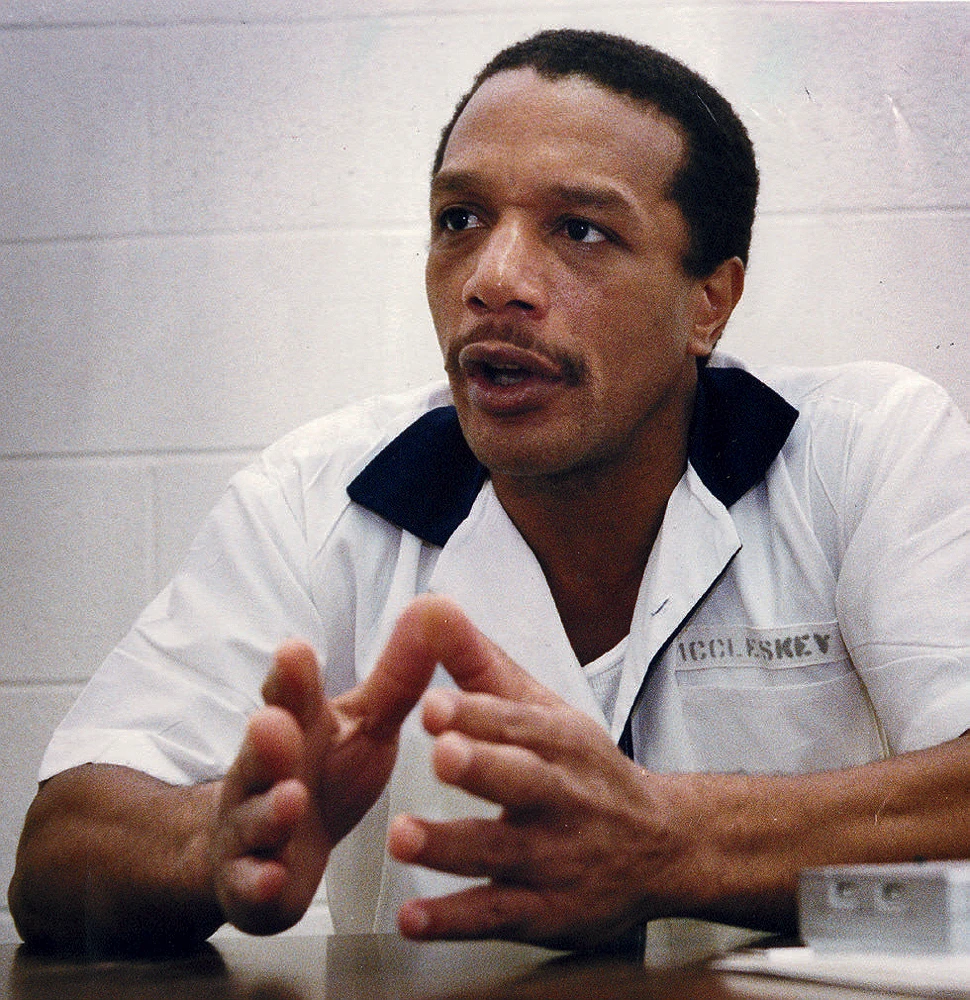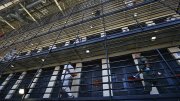For a nation “conceived in Liberty,” as Abraham Lincoln emphasized with a capital L in hand-writing his Gettysburg Address, it should be shocking that the United States has locked up almost a quarter of the prisoners in the world despite having less than 5 percent of the population. Nearly two million people are behind bars, with an almost six-fold increase in the U.S. rate of incarceration during the past half-century—and a current rate as much as 10 times that of other economically advanced nations. Yet those facts are not shocking: mass incarceration is embedded in American culture and society, a result of six decades of triumphant tough-on-crime politics.
Rachel Elise Barkow, J.D. ’96, Seligson professor of law at New York University, and a leading thinker about criminal law and policy, summarizes those politics in Justice Abandoned as “aggressive policing, less due process, more detention of people accused of crimes, and longer sentences served under ever-harsher conditions.” The book is groundbreaking, engrossing, and authoritative. The argument it makes, while detailed and dense, is lucid and persuasive.
Justice Abandoned is an exposé about the Supreme Court. Between 1968 and 1991, in a half-dozen landmark rulings, and in many more relying on them since, Barkow concludes that the Court has “played a pivotal role in establishing mass incarceration in America,” with “a direct through line between the Court’s pronouncement that a practice is constitutional and its explosive use throughout the country.” She writes that her book’s “central goal” is to expose the Court’s “culpability.”
The Court’s “Culpability”
Why “culpability”—blameworthiness? That’s a term of special condemnation in criminal justice as the basis for government punishment of convicted wrongdoers. Barkow is using it in a civic and moral sense, with constitutional implications: “The problem is the Constitution cannot protect itself. The Supreme Court has to provide the necessary protection against government overreach when it conflicts with constitutional safeguards.”
The Constitution is full of safeguards against mass incarceration, she explains, beginning with the structure of government. The framers “went out of their way to make it difficult for the state to impose punishment. Under the Constitution, all three branches must agree before criminal power can be exercised”: the legislature, by making conduct criminal; the executive, by enforcing the law; the judiciary, usually through a jury, by convicting. In addition, many constitutional provisions prohibit abuse by the government at each stage of the criminal process—from police investigation of possible crime, to punishment of people convicted.
Liberty was a principal concern of the nation’s founders—what George Washington called “the sacred fire of liberty.” Sam Adams said it should be defended “against all hazards,” especially abusive acts of government. As Barkow puts it, “Government power is most threatening in this context because it can strip away liberty and even take someone’s life.”
Whichever leading school of interpretation a justice favors, she goes on, none supports majority readings of the Constitution that have led to “the carceral landscape that dominates America today.” The Court’s key rulings about criminal justice “contradict the original and plain meaning of the Constitution’s text, they flout precedent that existed at the time they were decided, and they fly in the face of any theory of a living Constitution that is based on expanding notions of liberty and equality to changing circumstances.”
Barkow is well versed in each school and in skepticism about each: she clerked for leading conservatives—Judge Laurence H. Silberman, LL.B. ’61, on the District of Columbia Circuit and Justice Antonin G. Scalia, LL.B. ’60, on the Supreme Court.
“Penal Populism”
That abandonment of constitutional meaning is even worse because of what it has been abandoned for. The contention of the tough-on-crime movement has been that putting more people behind bars and sentencing them to longer terms make America safer. The movement sells this view through what Barkow calls “penal populism,” the “pathological political process that caters to the public’s fears and emotions without any institutional safeguards or checks for rationality to make sure these policies work or are the best approach to combating crime.”
In her 2019 book, Prisoners of Politics: Breaking the Cycle of Mass Incarceration (Harvard), Barkow laid out how deceptive and damaging that contention is. She summarized “a growing body of research showing that increases in incarceration” are “correlated with increases in crime rates.” Longer prison sentences threaten rather than protect public safety. Prisons breed future criminals rather than rehabilitating people so they can make good on second chances.
The U.S. recidivism rate—the rate at which released prisoners commit additional crimes—makes clear how relatively few former prisoners make good on those chances. Based on a 10-year study in 24 states, the U.S. Justice Department reported in 2021 that, within one year, 43 percent of released prisoners were arrested again. Within 10 years, the rate rose to 82 percent. In the lion’s share of cases, prisons proved to be criminogenic: they helped produce crimes.
Prisoners of Politics showed how mass incarceration flouts social science. Justice Abandoned recounts how that politics has infected the Supreme Court and entrenched the massive problem. Barkow demonstrates that “the Court fell prey to the same tough-on-crime frenzy as the public.” In the spirit of Sherlock Holmes, having eliminated the leading schools of constitutional interpretation as bases for the Court’s abandonment of the Constitution’s safeguards against mass incarceration, Barkow is convincing when she argues that the only explanation left for the rulings she focuses on is “pure politics”—“pathological deference to the government and its claims that liberty must be sacrificed for public safety.”
“A Constitutional Abomination”
The details about the Court’s role in establishing the system are shocking, even if facts about mass incarceration and recidivism no longer are. The titles of the six case studies at the heart of Barkow’s book distill the rulings’ lamentable impacts, resulting in “curtailment of liberty and increased inequality.” These are the cases that she unpacks:
• Lowering the Bar for Pretrial Detention: United States v. Salerno (1987)
• Normalizing Coercive Plea Bargaining: Bordenkircher v. Hayes (1978)
• Upholding Disproportionate Sentences: Harmelin v. Michigan (1991)
• Tolerating Overcrowded Prisons: Rhodes v. Chapman (1981)
• Greenlighting Stop-and-Frisk: Terry v. Ohio (1968)
• Overlooking Pervasive Racial Bias: McCleskey v. Kemp (1987)
The consequences of the first and last cases are parts standing for the whole of the book’s mastery.
Nearly a quarter of the almost two million people behind bars are jailed before trial. They have been charged with crime but haven’t been convicted based on proof beyond a reasonable doubt. They are often jailed in overcrowded and squalid conditions.
In the Salerno case, the Court upheld pretrial detention as a “solution to the pressing societal problem of crimes committed by persons on release.” The reasoning was sophistry: the Court said detention’s purpose was a “regulatory goal”—protecting the public from dangerousness—not punishment. The premise was false. As Barkow reports, in a random sample of thousands of cases before enforcement of the law allowing detention for dangerousness, “only 1.8 percent of all federal defendants who were released pretrial were rearrested.” Among them, “56 percent of the rearrests were for misdemeanors, the most common of which was illegal operation of a motor vehicle,” crimes putting defendants well below the “dangerousness” threshold.
Barkow calls people jailed before trial “casualties in a failed war on crime that has become a war on liberty.” Before the war on crime, the presumption of innocence at the heart of American criminal justice supported the release on bail before trial of “the overwhelming majority of people charged with crimes”—“including people charged with serious crimes.”
In the war on liberty, however, the government is permitted to make “notoriously poor” predictions of a person’s likely dangerousness if they were to be released. Those dubious forecasts are frequently a basis for jailing people who should be released. Barkow says, “These periods of detention are devastating to people’s lives. They lose their jobs, their housing, custody of their kids.” And: “It should not surprise anyone that detention itself causes crime.” In “the ultimate deprivation of liberty,” pretrial detention for dangerousness violates the Due Process Clauses of the Fifth and the Fourteenth Amendments and the Excessive Bail Clause of the Eighth Amendment, Barkow writes, in “a constitutional abomination.”
People of color are notably more likely to be jailed before trial than whites with comparable criminal records and arrests for similar crimes. They are more likely to get “disproportionately harsher treatment at each stage of the prosecutorial process”: tougher charges filed against them, less favorable offers of plea bargains, longer sentences, more solitary confinement, longer waits for parole. While walking or driving, they are much more likely to be stopped by police, and stopped on a pretext rather than on solid grounds. Those and related facts amount to an indictment of widespread racial bias throughout the criminal justice system—but they aren’t sufficient evidence for winning a legal claim of discrimination.

After Warren McCleskey, a Black man, killed a white police officer in Atlanta and was sentenced to death, a model statistical study assessed more than 2,000 Georgia homicide cases. Controlling for 39 factors, Barkow summarizes, the researchers found that “on average, a defendant who killed a white victim faced odds of getting a death sentence that were 4.3 times greater than similarly situated defendants whose victims were Black.” The Supreme Court treated the study as irrelevant: it didn’t prove that the criminal justice system had discriminated specifically against McCleskey.
The majority opinion said that “if we accepted McCleskey’s claim that racial bias has impermissibly tainted the capital sentencing decision, we could soon be faced with similar claims as to other types of penalty.” A dissent called that claim “a fear of too much justice”: the history of the Fourteenth Amendment, Barkow writes, “makes clear that equality in the context of criminal law enforcement and punishment was at the core of equal protection concerns.” One of her most chilling observations is this: “Mass incarceration would never succeed in America if its misery was not disproportionately focused on minority groups with relatively less political power,” making “an empty platitude” of the Constitution’s “command for equal protection.”
Mass incarceration is a form of unfreedom, shaped by unjust and unfounded politics, including politics masquerading as constitutional law. Barkow wrote Justice Abandoned because “the Supreme Court has largely escaped scrutiny of its contribution to mass incarceration,” and—as a kind of omnibus dissent to almost six decades of Court policymaking—to present “a possible path of correction.”
She is standing up for liberty, as Lincoln did, with liberty yoked to equality. Together, those touchstone values provide the foundation for a different understanding of the Constitution’s commands and for a more effective and fairer system of punishment.









